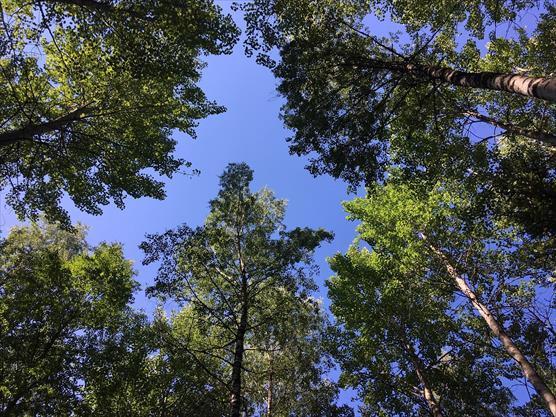Aspen increases biodiversity in forests
European aspen is a key species in boreal forests. However, little detailed data are available on the occurrence, abundance and temporal dynamics of aspen in Northern Europe. The researchers of the IBC-Carbon project mapped what research-based data already exist on the significance of aspen as a part of forest ecosystems and what essential information is still missing. The review also examines possibilities to produce spatial and temporal data on the occurrence of the species using different types of remote sensing methods.
Aspen is a key species for forest biodiversity
Although European aspen or, simply, aspen (Populus tremula L.) tends to have a scattered occurrence in forests and appear as individual or groups of trees, these occurrences are vital for forest biodiversity. Through its life cycle and even as a dead, decaying tree, aspen offers a habitat to a number of species, including mosses, lichens and fungi, insects and other invertebrates as well as birds and mammals.
Old, robust aspens are especially significant in securing biodiversity. In previous decades, forestry has decreased the number of aspens due to its practice of exterminating aspen from commercial forests. At present, moose, for example, are decreasing the number of aspen trees as they have taken a liking to aspen saplings.
The continuity of aspen trees of different ages is a precondition to the survival of viable populations of associated species. ”Exact data on the occurrence, distribution and abundance of aspen trees would enable planning and conservation that is more effective in supporting forest biodiversity,” says researcher Sonja Kivinen from the University of Eastern Finland.

The IBC-Carbon project studies aspen in the Evo region. © Photo: Sonja Kivinen
Remote sensing to provide more data on forest biodiversity
New methods of studying forest biodiversity are constantly developed. In addition to the ecological significance of aspen, the IBC-Carbon project studies methods of identifying aspen in different types of remote sensing data.
Based on research literature, when mapping European aspen and quaking aspen (Populus tremuloides), the latter of which occurs in North America, especially high-resolution airborne laser scanning and hyperspectral imaging data have proved to be promising.
The suitability of different types of remote sensing data for aspen mapping and monitoring is also dictated by the spatial and temporal coverage as well as the data acquisition costs. Combining ecological knowledge with remote sensing data is key to a better understanding of the current and future state of aspen-related biodiversity.
More on the topic
- Kivinen, S., Koivisto, E., Keski-Saari, S., Poikolainen, L., Tanhuanpää, T., Kuzmin, A., Viinikka, A., Heikkinen, R. K., Pykälä. J., Virkkala. R., Vihervaara, P. & Kumpula, T. (2020). A keystone species, European aspen (Populus tremula L.), in boreal forests: Ecological role, knowledge needs and mapping using remote sensing. Forest Ecology and Management 462, 118008.
For further information, please contact
- Researcher Sonja Kivinen, University of Eastern Finland, tel. +358 40 588 4185, firstname.lastname@uef.fi